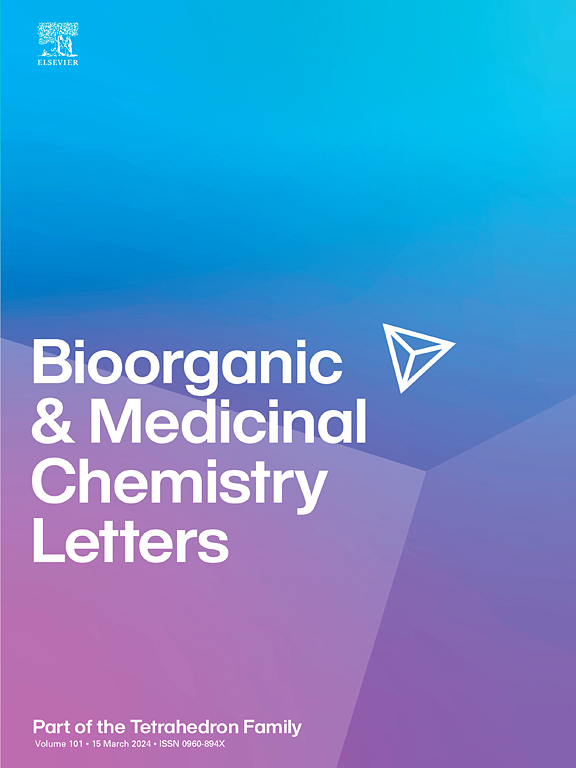DNA编码文库衍生的自taxin抑制剂的优化与非锌结合模式有效的体内降低LPA的喹唑啉酮化合物。
IF 2.5
4区 医学
Q3 CHEMISTRY, MEDICINAL
引用次数: 0
摘要
近年来,溶血磷脂酶autotaxin (ATX)已成为治疗多种人类疾病的一个有吸引力的靶点,包括炎症、神经变性、血管生成、癌症、眼部和纤维化疾病等。从dna编码文库筛选中发现的喹唑啉酮命中结构1开始,开发了具有良好综合物理化学性质的强效非zn2 +结合ATX抑制剂31。该化合物在体内大鼠实验中显示出持续降低溶血磷脂酸(LPA)的作用,使其成为进一步机制研究的概念验证化合物。本文章由计算机程序翻译,如有差异,请以英文原文为准。

Optimization of a DNA encoded library derived autotaxin inhibitor hit to a potent in vivo LPA lowering quinazolinone compound with a non‑zinc binding mode
In recent years, lysophospholipase autotaxin (ATX) has emerged as an attractive target for treating a variety of human diseases, including inflammation, neurodegeneration, angiogenesis, cancer, ocular and fibrotic diseases, among others. Starting with the quinazolinone hit structure 1, which emerged from a DNA-encoded library screen, the potent, non-Zn2+ binding ATX inhibitor 31 with good overall physicochemical properties has been developed. This compound demonstrated a sustained reduction of lysophosphatidic acid (LPA) in an in vivo rat experiment, qualifying it as a proof-of-concept compound for further mechanistic studies.
求助全文
通过发布文献求助,成功后即可免费获取论文全文。
去求助
来源期刊
CiteScore
5.70
自引率
3.70%
发文量
463
审稿时长
27 days
期刊介绍:
Bioorganic & Medicinal Chemistry Letters presents preliminary experimental or theoretical research results of outstanding significance and timeliness on all aspects of science at the interface of chemistry and biology and on major advances in drug design and development. The journal publishes articles in the form of communications reporting experimental or theoretical results of special interest, and strives to provide maximum dissemination to a large, international audience.

 求助内容:
求助内容: 应助结果提醒方式:
应助结果提醒方式:


